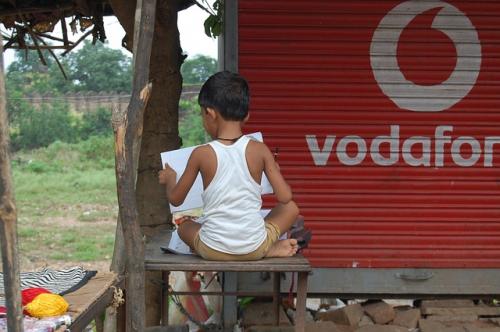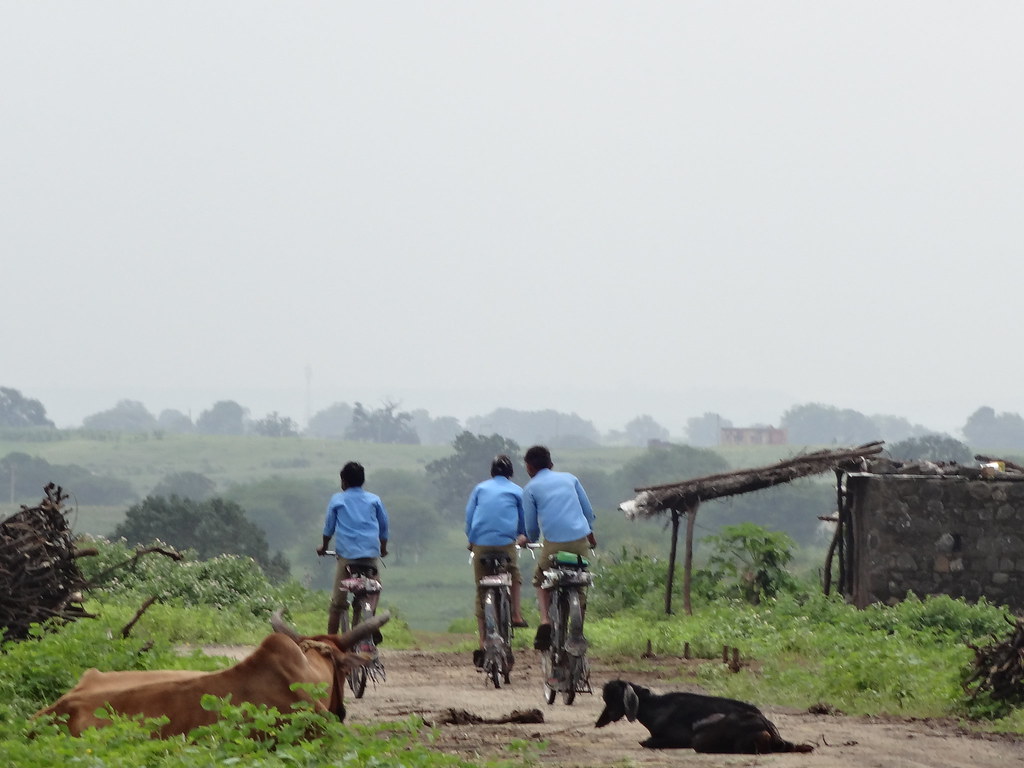
School students in rural areas are facing myriad difficulties in accessing e-learning
DASRATH, A Class X student, lives in a village near Zawar, and attends a private school in Udaipur, 45 kms away from his village. He recently lost the only smartphone at home and is now unable to access notes and assignments sent online by his teachers.
“I cannot reach out any of my classmates for doubts since everybody lives closer to the city. None of them are missing out on online notes,” he says. “So far, nobody has asked me if I’m facing any issues. So, I just manage to go through the physical textbooks and rely on self-studying for the present.”
With a crumbling economy and non-functional schools, many children are forced outside for work to supplement the household. Without means of access to technology, the problem is further aggravated.
“There might be a sharp rise in child labour amongst the older boys and if transportation restrictions, especially on railways, are uplifted, we might see an increase in child trafficking as well. Amongst girls, we don’t know how many child marriages may have taken place during the lockdown period,” says Shiv Singh Nayal who works on child rights in Rajasthan. “In school, where attendance records are regularly updated, it is easier to keep a track of the child. Without such formal system and the lockdown in place, the dropout rate might increase indefinitely.”
Ever since the nationwide lockdown to tackle the COVID-19 pandemic began on March 25, many educational institutions have resumed learning for their students through online medium and software applications such as WhatsApp and Zoom. Although online schooling is an easy way out, a vast segment of India’s population is unable to access these means.
Ever since the nationwide lockdown to tackle COVID-19 pandemic, many educational institutions have resumed learning through online medium. A vast segment of India’s population is, however, unable to access these means.
Around 27 percent of rural population has access to internet. In urban areas, the reach is 51 percent
Conducting video lectures has emerged as the favoured means of online communication in cities, but in many areas, prevalence of low network coverage and inaccessibility to a device or a data pack have made interactions through texts and images as the primary means of communication.
Most schools are thus using WhatsApp to reach out to students. “Most students who own a smartphone have accessibility to WhatsApp since it can be run on low data networks,” says Snighda Das, a biology teacher at Vidya Bhawan, an educational society in Udaipur, Rajasthan. “However, only about 30 percent students are able to connect with us on WhatsApp groups in villages, out of which only half are regular. In comparison, about 50 percent urban students are able to connect on the groups.”
Affordability to devices has emerged as one of the leading reasons for low accessibility. In rural India, 14.8 million children are aged between 12 and 17 and about 70 percent of them attend government schools. Given the low accessibility to technological devices and internet, many of them are left out of online learning.
At times, having an android phone coupled with data pack might not always ensure seamless learning. “Even if one has access to internet, getting network for data connectivity is the main issue,” says Harish Mali, a mathematics teacher. “There are even times when having electricity at home is an issue. In such conditions, it is very difficult to ascribe online learning as an alternative to formal schooling.”
There are even times when having electricity at home is an issue. In such conditions, it is very difficult to ascribe online learning as an alternative to formal schooling
 The turnout in online activity has also declined over time. “Initially, at least half of the students in the group would be active for a stipulated time period. After lockdown has been uplifted, students have been active at odd times,” says Das. “One of the major reasons is parents going out for work. Those involved in farm work, don’t arrive at home until late in the evening.”
The turnout in online activity has also declined over time. “Initially, at least half of the students in the group would be active for a stipulated time period. After lockdown has been uplifted, students have been active at odd times,” says Das. “One of the major reasons is parents going out for work. Those involved in farm work, don’t arrive at home until late in the evening.”
Parents were also found to be hesitant in leaving their smartphones with children for the fear of misuse. “I usually give the smartphone to my children after I return home around 5 pm. If I leave it with my 11-year old, he will play games all day,” says Laxmi Prasad, a farmer in Assam, who goes to his fields in the morning.
Prasad has two children, aged 8 and 11, who attend a nearby government school. This instance raises the concern of availability of one smartphone between more than one child, hence limiting their screen time.
Initially, at least half of the students in a group would be active. After lockdown has been uplifted, parents are going for work and hence students are active at odd times
In most cases, schooling does not lead to learning. More than 50 percent students in class 5 cannot read a class 2 textbook, said the Annual Status of Education Report (ASER) 2018. “But for students who come from underprivileged backgrounds and are first generation learners, traditional schooling becomes their only source of learning,” says Nayal.
For rural students, teachers and their personal guidance have played an important part in the learning process. “Without physical supervision of teachers, it is very difficult to keep the student interested in learning. Hailing from far-flung areas, the idea of attending school and its environment provides hope,” says Das.
Engaging in constant dialogues on WhatsApp groups with students is helping teachers in keeping students active. “Keeping the language barriers in mind, we have changed the format of our worksheets to make it more readable”, says Ameya who works in the language team at Vidya Bhawan. “Initially, we prepared and sent out PDFs of worksheets. Later on, we tried uploading YouTube videos related to the topics but it did not work out well due to network issues. So, now we have resorted to sending screenshots of the pages that can be accessed even with low data connectivity."
Although difficulties persist, there have also been some stories of hope and perseverance. “Many students who would usually not speak or write anything in class are now showing greater participation in online activities and assignments,” says Das. “In class, at times, the fear of scrutiny and punishments overshadows student’s abilities. Online assessment is free of such bias. The participant does not need to show her face, hence enhancing the response.”
In school, it is easier to keep a track of the child through attendance. Without such formal system, the dropout rate will increase and problems like child labour and marriages will rise
Various security concerns have also been raised with this transition. “We keep a close watch on the activities of students in the groups. It is not only out of concern but has also become a necessity at a time when individual’s data and privacy is at its most vulnerable. We must ensure that the child is safe online,” says Das.
While online learning platforms like Byju’s has gained momentum by offering free live classes during the lockdown, government mediums such as Doordarshan and All India Radio are also holding virtual classes in regional languages for students at all school levels.
Liked this story? GoI Monitor is an independent, ads-free platform, and we depend on readers like you to Support Our Efforts
Video: Lack of Content for Visually-Impaired
